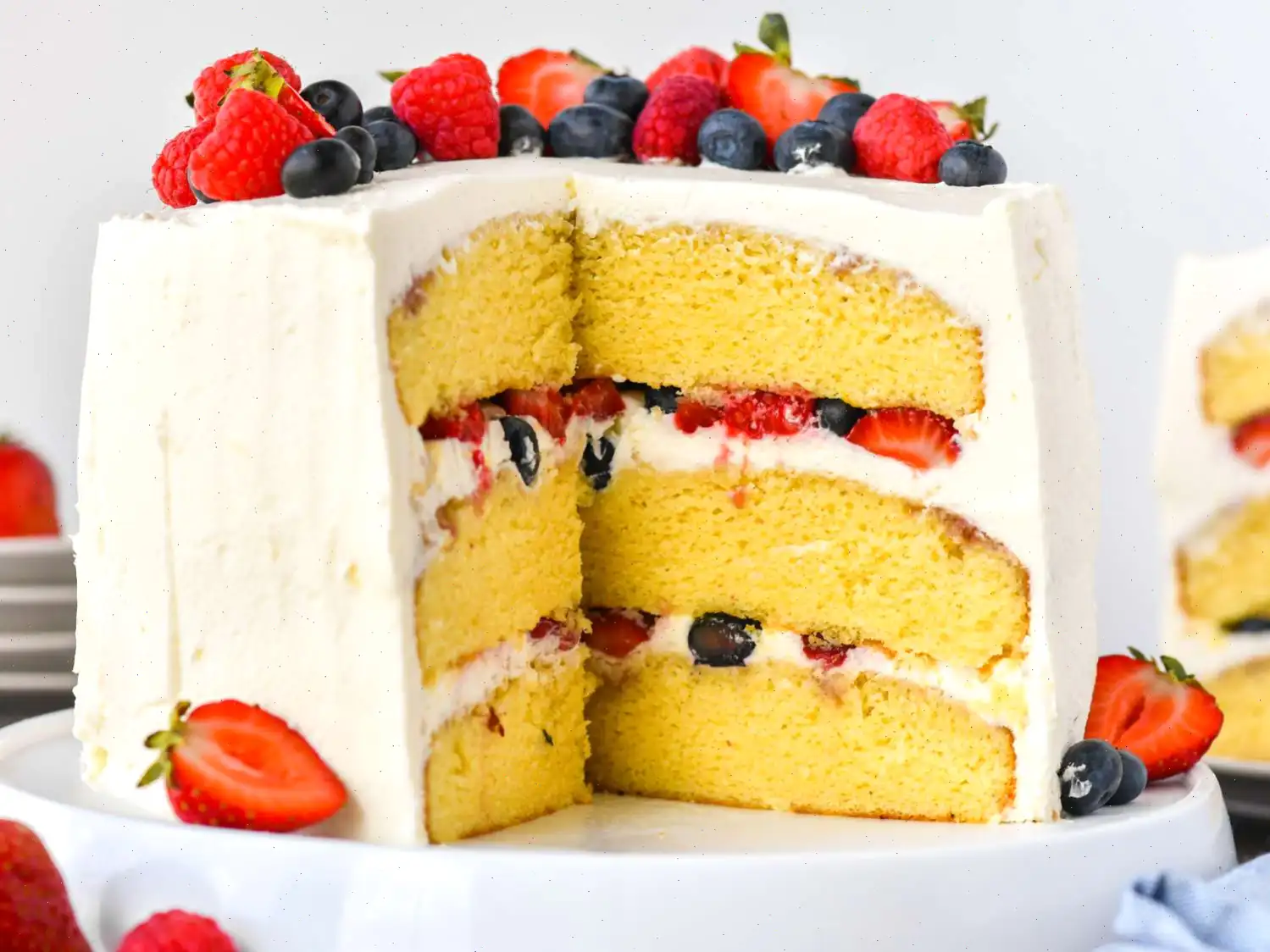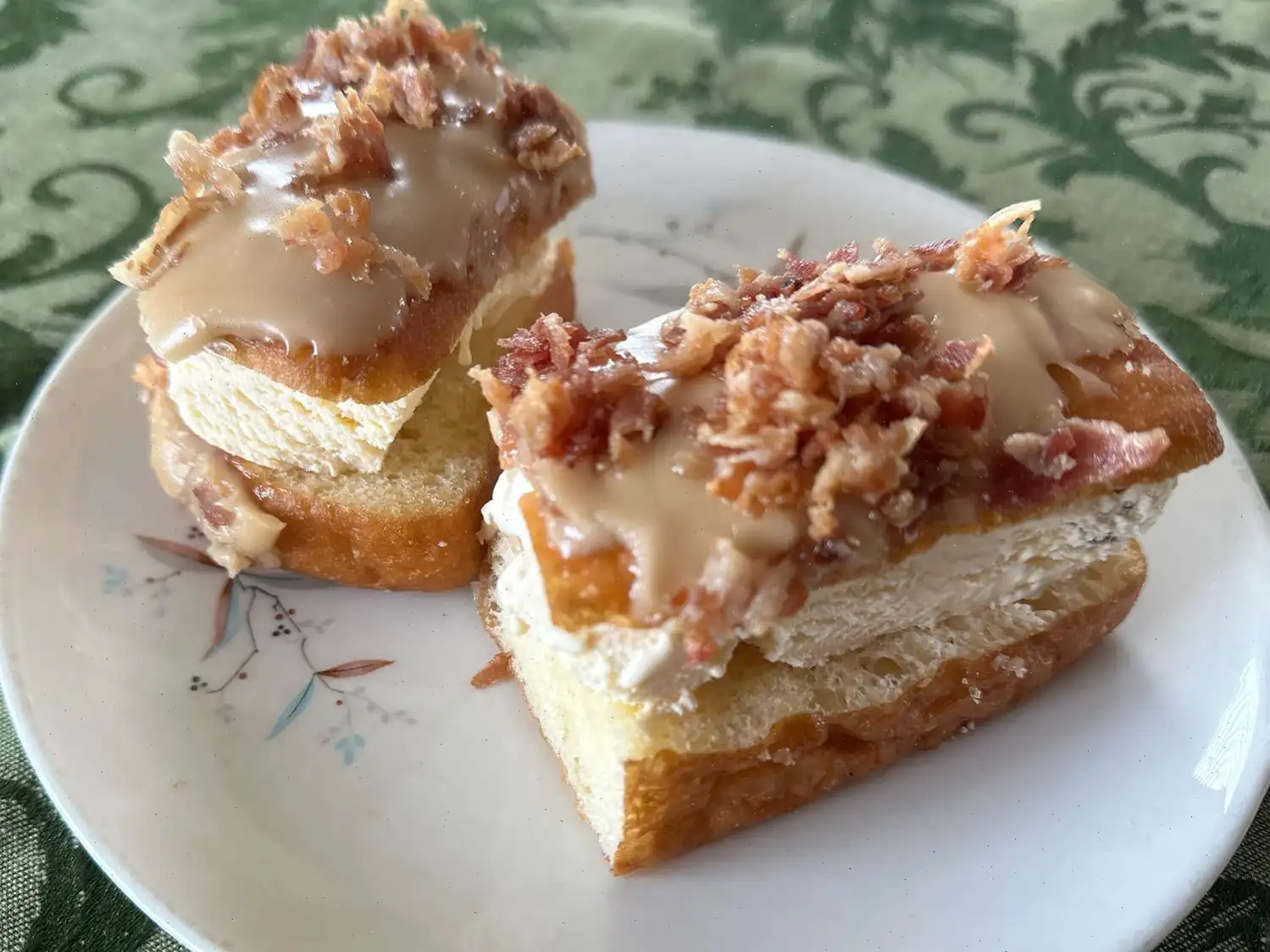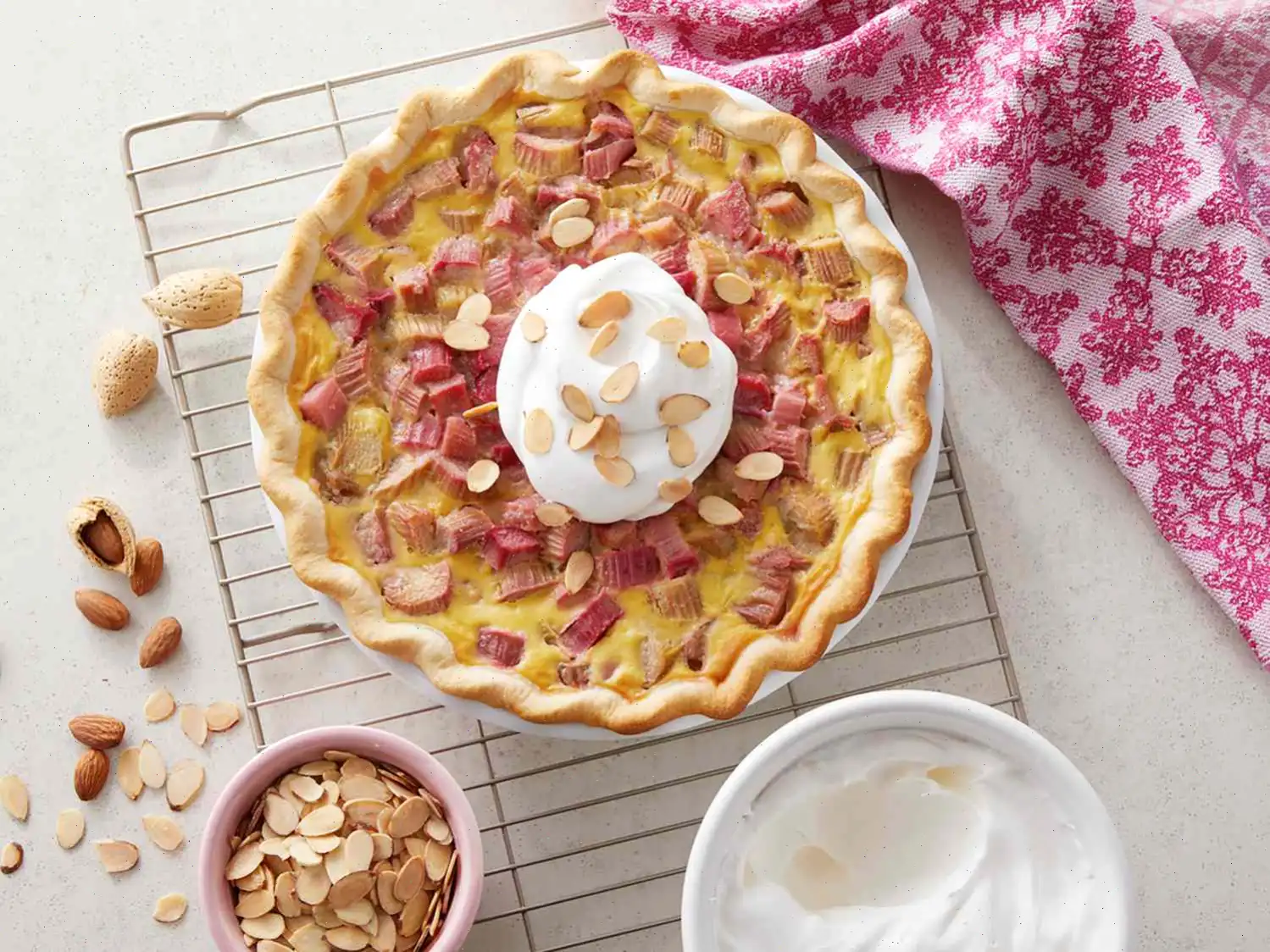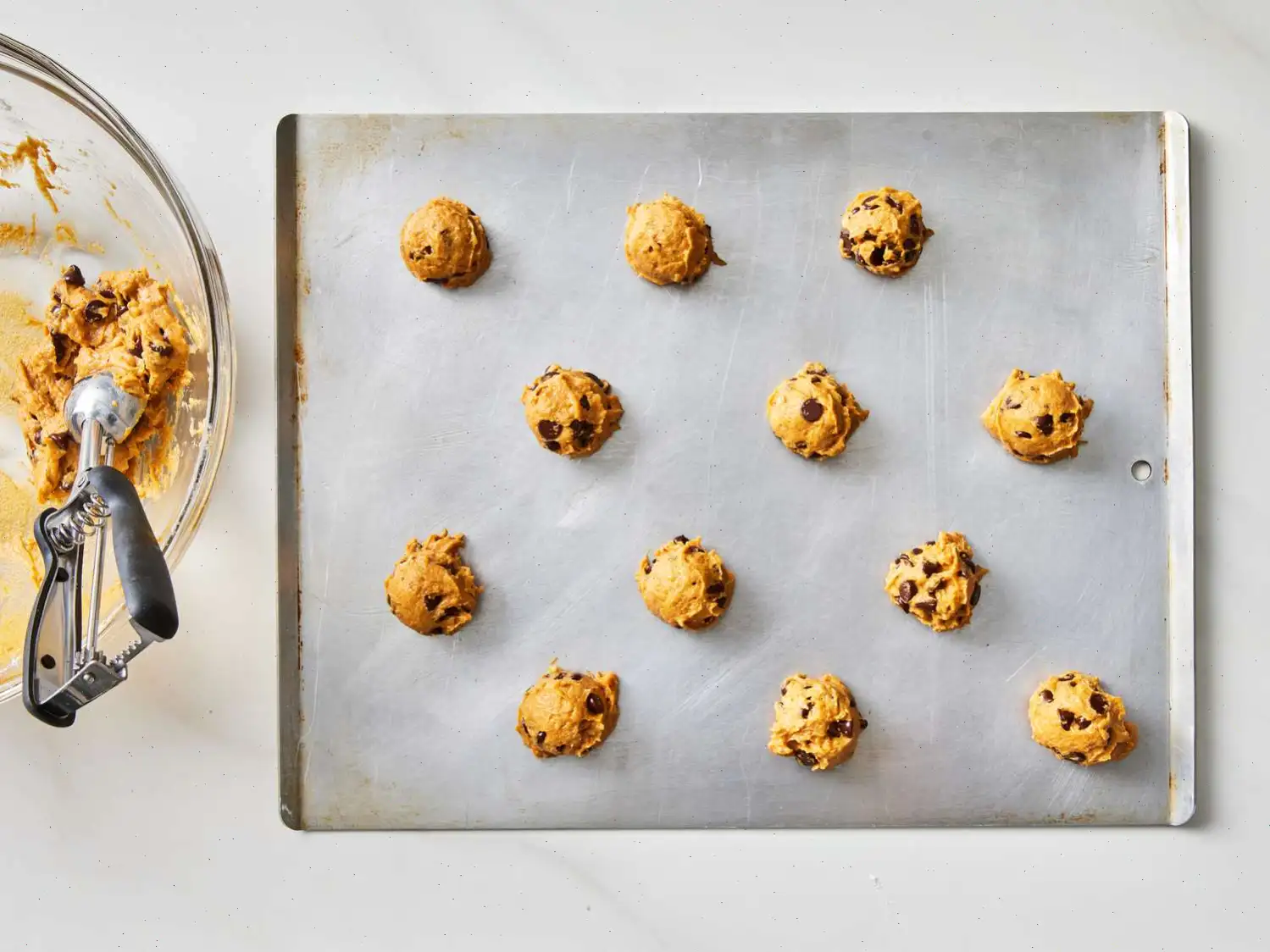
Bastani (Saffron and Rose Ice Cream) Recipe
Ingredients
This recipe was developed at its original yield. Ingredient amounts are automatically adjusted, but cooking times and steps remain unchanged. Note that not all recipes scale perfectly.
- 5 large egg yolks
- 1/2 cup white sugar
- 5 1/2 cups whole milk
- 2 to 4 tablespoons rose water
- 1 teaspoon vanilla extract
- 1/2 teaspoon saffron threads, crushed to a powder
- 1 1/2 cups whipping cream
- 1/3 cup chopped raw, unsalted pistachios (optional), plus more for garnish
- dried rose petals, for garnish
Directions
- Whisk together egg yolks and sugar in a medium bowl until thick and pale yellow, about 1 to 2 minutes.
- In a medium saucepan, warm the milk, rose water, and vanilla over medium heat just until the mixture lightly simmers. Do not let it come to a full boil.
- Gradually pour the warm milk mixture into the egg yolk mixture, whisking constantly to prevent curdling.
- Return the combined mixture to the saucepan. Cook over medium-low heat, stirring constantly, until an instant-read thermometer reads 170F (77C) and the mixture thickens enough to coat the back of a spoon, about 5 to 8 minutes.
- Remove the saucepan from the heat and stir in the saffron, mixing until the mixture takes on a deep yellow color, about 1 minute.
- Stir in the whipping cream until well combined.
- Cover the surface of the mixture with plastic wrap, making sure it touches the liquid to prevent a skin from forming. Chill in the refrigerator for at least 8 hours, or up to 24 hours.
- Once chilled, churn the mixture in an ice cream maker according to the manufacturers instructions until it reaches the consistency of soft-serve ice cream.
- If using pistachios, add them during the last few minutes of churning.
- Transfer the ice cream to a freezer-safe . Cover the surface with parchment paper to prevent ice crystals from forming. Freeze for at least 4 hours, or until firm.
- When ready to serve, scoop the ice cream into bowls and garnish with additional pistachios and dried rose petals.
- Store any leftover ice cream in an airtight in the freezer for up to 1 week.
Nutrition Facts (per serving)
| Calories | 356 |
| Total Fat | 25g |
| Saturated Fat | 15g |
| Cholesterol | 207mg |
| Sodium | 130mg |
| Total Carbohydrate | 22g |
| Dietary Fiber | 0g |
| Total Sugars | 22g |
| Protein | 11g |
| Vitamin C | 0mg |
| Calcium | 240mg |
| Iron | 1mg |
| Potassium | 312mg |
Servings per recipe: 8

Description: Bastani is a traditional Persian ice cream that combines the exotic flavors of saffron and rose water, creating a uniquely fragrant and vibrant dessert. This creamy, luxurious treat is perfect for any special occasion or to simply enjoy a taste of Persian culinary heritage.
History of Bastani
Bastani, a Persian ice cream, has been a part of Iranian culinary tradition for centuries. It dates back to the Safavid era, when royal kitchens first began experimenting with ice and frozen desserts. The use of saffron, rose water, and pistachios is deeply rooted in the regions culinary history, with these ingredients being highly prized for their aromatic qualities. Over time, Bastani evolved from a simple, homemade treat to a popular street food in Iran and surrounding regions, where it is often enjoyed during the hot summer months.
Regional Features
Though originally from Iran, Bastani is widely enjoyed across the Middle East and Central Asia. Variations of the dessert are found in countries such as Turkey, Afghanistan, and Armenia, where the combination of saffron and rose water is also common in many traditional dishes. In some regions, Bastani is made with the addition of other local flavors, such as orange blossom water or yogurt, giving it a slightly tangy twist. The ice cream is often garnished with crushed pistachios, making it both a visual and culinary delight.
What Sets Bastani Apart
While there are many varieties of ice cream in the world, Bastani stands out due to its distinct blend of floral and savory flavors. The use of rose water is quite unique compared to typical Western-style ice creams, which usually rely on vanilla or chocolate for flavor. Additionally, the incorporation of saffron gives the ice cream a beautiful golden hue and a depth of flavor thats both sweet and slightly earthy. This combination of flavors is unlike any other, which makes Bastani a truly special dessert.
Where It Is Served
Bastani is often served in local ice cream parlors across Iran and other Middle Eastern countries. In Iran, its typically served as a standalone dessert, but its also commonly paired with other dishes like "faloodeh" (a traditional Iranian sorbet). It is also a popular offering at weddings and large gatherings, where it is enjoyed with friends and family as part of the celebration. In Iran, it is often served in a cone or in a bowl, topped with a sprinkling of pistachios and sometimes dried rose petals for added decoration.
Fun Facts
Here are some fun facts about Bastani:
- Bastani is sometimes referred to as "Persian ice cream" due to its origins in Iran.
- The use of saffron, the worlds most expensive spice, gives Bastani its signature golden color and delicate flavor.
- In Iran, Bastani is often served with "saffron tea" or enjoyed alongside fresh fruits to enhance the overall experience.
- Bastani is not just a dessert but a symbol of Iranian hospitality; offering it to guests is a traditional sign of respect and warmth.
With its complex and aromatic flavors, Bastani offers a taste of Iran's rich culinary heritage. Its combination of rose water, saffron, and pistachios makes it a refreshing, decadent treat for anyone seeking to explore the flavors of the Middle East.
You can listen to this recipe in AI audio format. Simply click the play button below to listen to the content in a format that suits you best. It’s a great way to absorb information on the go!








